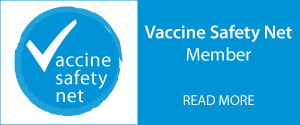Need for developing case definitions and guidelines for data collection, analysis, and presentation for systemic lupus erythematosus as an adverse event following immunization:
Systemic lupus erythematosus (SLE) is the prototypic systemic autoimmune disease. It is characterized by the production of auto-antibodies which may lead to immune-complex mediated end organ involvement. The incidence of SLE is estimated at 2–7 per 100,000 per year with a prevalence of 12–50 per 100,000 [1]. It is much more common in women and in non-White ethnic/racial groups.
The etiology and pathophysiology of SLE remain poorly understood. As with most autoimmune conditions, SLE is thought to be due to an underlying genetic susceptibility combined with a specific environmental exposure, leading to immune activation and dysregulation. It has been hypothesized that vaccination could be one such environmental trigger [2], [3]. Although the susceptibility to SLE is less well characterized, more is known about the pathophysiology of the end organ manifestations of SLE. For example, there is strong evidence that the inflammatory changes in lupus nephritis are due to immune complex formation. These immune complexes activate the complement cascade resulting in significant localized inflammation and tissue damage.
Systemic Lupus Erythematosus can present with a diverse array of clinical symptoms, manifestations and laboratory abnormalities. It is a clinical diagnosis made on the presence of specific clinical and laboratory manifestations; classification criteria are used for inclusion in observational studies and randomized clinical trials. Traditionally the 1997 revised and updated American College of Rheumatology (ACR) classification criteria has been used to define cases for such studies for both adult and pediatric SLE [4]. The Systemic Lupus International Collaborating Clinics (SLICC) group recently proposed and validated an expanded classification of SLE [5]. Both the traditional ACR and the newer SLICC criteria include immunologic and hematologic laboratory findings as well as clinical manifestations.
Although numerous studies have established the safety of vaccination in patients with SLE, a limited number of published reports describe SLE as a possible complication following routine vaccination. A literature search identified six case reports/series hypothesizing an association between immunization and induction or promotion of SLE; they are summarized in Table 1. Two reports referred to influenza vaccination [6], [7], two to human papillomavirus (HPV) vaccination [8], [9], and one report describes the onset of SLE following Hepatitis B virus(HBV) vaccination [10]. The report by Older et al. describes the onset of SLE in five soldiers given one or more simultaneous vaccinations [11]. This case series and the case series describing HBV vaccination used the 1997 ACR classification criteria to ascribe a diagnosis of SLE; the other publications did not report the use of a case definition for SLE.



